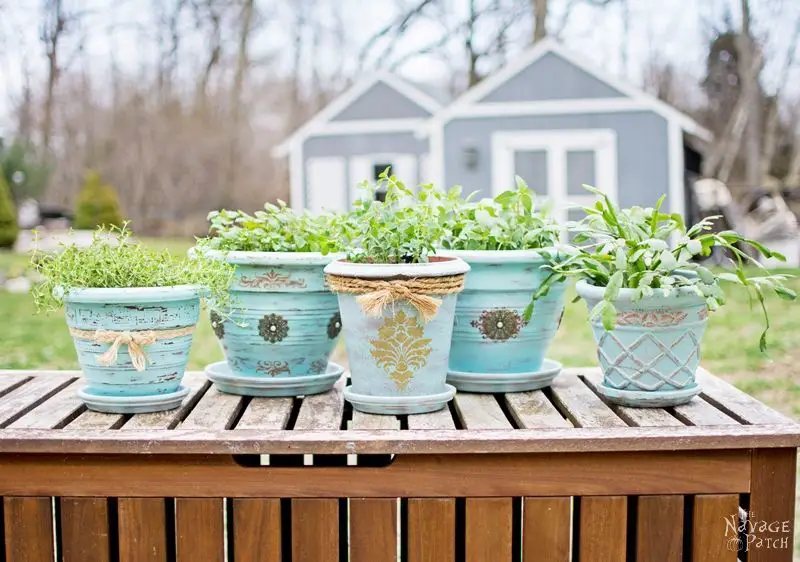Are Clay Flower Pots Better Than Plastic?
The Classic Debate: Clay vs Plastic Planters
Gardeners have debated the merits of clay versus plastic pots for generations. Both materials have advantages and disadvantages when it comes to growing healthy plants. Clay pots allow air and moisture to pass through the porous terra cotta material, while plastic planters retain more water. This key difference affects factors like soil moisture, drainage, and root health. When choosing pots for your plants, it helps to understand the pros and cons of these time-tested options.
History of Clay Pots
Clay pots have been used for growing plants for thousands of years. According to The Storied History and Enduring Life of Terra Cotta, ancient humans first baked clay pottery in the sun or over open fires. With the advent of agriculture, durable clay pots were needed for food preparation and storage.
Clay pots became popular for growing plants in ancient Egypt and later in ancient Rome, as noted by History of Plant Containers History Back to the Egyptians. The availability of clay made it the material of choice. Clay pots allowed excess water to evaporate while still retaining some moisture in the soil. Their porous nature provided ventilation while also insulating root systems.
Pros of Clay Pots
Clay pots have several advantages over other materials when it comes to growing plants. One major benefit is that clay allows better air pruning of roots. The porous nature of terra cotta clay enables both air and moisture to penetrate the sides of the pot. This air pruning stops roots from growing in circles and promotes the growth of new fine feeder roots instead (https://www.justdial.com/kaithal/Clay-Flower-Pot?srcterm=Clay%20Flower%20Pot). Allowing air to reach the roots helps the soil breathe and prevents overwatering. Soil oxygen is critical for healthy plant growth.
Another pro of clay pots is their natural look. The terra cotta material and earthy colors blend seamlessly into gardens and plant decor. Plastic pots, even when painted, often look obviously artificial. The organic appearance of clay is aesthetically pleasing, especially for indoor plants and centerpieces. Using clay pots contributes to a natural style.
Cons of Clay Pots
Clay pots have some drawbacks compared to plastic pots. The main disadvantages are that clay pots tend to be heavier, can crack or chip more easily, and are typically more expensive than plastic pots.
Due to the natural clay material, clay pots have more weight than plastic pots. This makes clay pots less portable and more difficult to move around. The heavy material also means clay pots can crack or chip if handled roughly or dropped 1. The clay is brittle and prone to breaking with impact.
The production process for clay pots also makes them more expensive than mass-produced plastic pots. Although prices vary, clay pots often cost 2-3 times as much as basic plastic pots of the same size. The costs quickly add up if purchasing many clay pots.
Gardeners should be prepared for the increased weight, fragility, and price when choosing clay over plastic. However, many feel the natural terra cotta appearance and porous properties make up for these drawbacks.
History of Plastic Pots
Plastic flower pots first emerged in the early 20th century, though widespread use didn’t occur until the 1950s and 1960s. One of the earliest plastic flower pots was patented in the United States in 1961 by Herman O. Armantrout (1). Plastic plant pots rose in popularity through the later half of the 1900s due to their low cost and durability compared to clay pots.

The mass production of plastic made it an inexpensive option for potting containers. Plastic pots were easy to manufacture through injection molding and other industrial processes. This allowed them to be produced efficiently and affordably on a massive scale (2). Their low cost and light weight made plastic ideal for commercial greenhouse growers, nurseries, and garden centers looking for an inexpensive container option.
Today, plastic pots dominate the gardening market. Their versatility, durability, low cost, and light weight have made them the go-to choice for most casual gardeners and commercial plant growers. Plastic pots now come in many shapes, sizes, and colors to suit any indoor or outdoor gardening need.
(1) US3009603A – Plastic flower pot
Pros of Plastic Pots
Plastic flower pots have several advantages over clay pots:
Plastic pots are much lighter than clay pots. This makes them easier to move around and transport. Plastic’s lightweight nature also reduces the chance of damaging floors or fixtures when moving plants (Source).
Plastic pots are generally cheaper to produce than clay pots. This makes plastic pots more affordable for consumers and nurseries alike (Source).
Plastic pots can be mass produced in very uniform shapes and sizes. This standardization allows growers to plan their operations more efficiently (Source).
Cons of Plastic Pots
One of the downsides of using plastic flower pots is that they do not look or feel as natural as clay pots. Plastic has an artificial, manufactured appearance that some gardeners feel detracts from the organic nature of gardening.
Another disadvantage is that plastic pots do not allow soil to breathe as well as porous clay pots. Over time, soil in plastic containers can become compressed and lack adequate air circulation, which plant roots need to thrive. This is because plastic is non-porous and does not allow moisture to evaporate through the sides of the pot like terra cotta does. The trapped moisture can lead to problems like root rot due to lack of oxygen.1
Environmental Impact
When considering clay versus plastic pots, the environmental impact is an important factor. Clay pots are generally more earth-friendly than plastic pots.
Clay is a natural material that comes directly from the earth. Clay pots are fully biodegradable and will break down back into the soil after their use. According to Choosing Clay or Plastic Pots for Plants, unglazed clay pots are 100% recyclable. The clay can be reused and reformed into new pots or other clay products.
Plastic, on the other hand, is manufactured from fossil fuels through refining and chemical processing. Most standard plastic plant pots are not biodegradable or compostable. They end up in landfills long-term. Recycled plastic pots are an improvement, but still take significant time to break down and are not as earth-friendly as natural clay.
Thus, when it comes to biodegradability and sustainability, clay pots have a clear environmental advantage over regular plastic pots. Clay’s natural composition allows clay pots to return to the earth, while plastic pots linger in landfills.
Cost Comparison
When it comes to price, plastic pots tend to be more affordable than clay pots. Plastic pots can be mass produced quickly and cheaply, keeping costs low. Standard plastic nursery pots may only cost $0.10 – $1 each depending on size. Decorative plastic pots for home use can range from $5 – $50 on average depending on size, style and quality.
Clay pots will generally cost more than plastic pots. The clay material and manufacturing process requires more time, effort and skill which translates to a higher price. Simple terracotta clay pots can range from $5 – $25 on average depending on size. More decorative and ornate clay pots may cost $50 and beyond.
Over the lifetime of the pot, plastic may end up being more economical than clay. Plastic pots are extremely durable and unlikely to break, so a one time purchase can last for many years. Clay pots are prone to cracking and breaking over time, requiring replacement every few years. However, many gardeners feel the natural benefits of clay are worth the additional investment.
When evaluating cost, also consider that plastic pots are often recycled for free or very cheaply from local nurseries or garden centers. Used clay pots will still require an upfront investment.
For the budget conscious gardener, plastic pots provide an affordable option. But those willing and able to invest more into their gardening experience may prefer the classic clay pot.
Conclusion
Summary of Main Points
Both clay and plastic pots have their pros and cons when it comes to use for planting flowers and plants. Clay pots have excellent drainage and air flow, natural cooling properties, and a certain old-fashioned charm, but they are heavy, breakable, and require more frequent watering. Plastic pots are extremely affordable, lightweight, and durable, but they retain heat, provide less aeration for roots, and are not as aesthetically pleasing. Looking at environmental impact, clay is more eco-friendly as it decomposes back into the earth while plastic pots create waste. However, plastic pots can be reused or recycled to extend their lifespan.
Final Recommendation
For most home gardeners looking to pot flowers and small plants, lightweight plastic pots are likely the better option. The convenience and lower maintenance of plastic outweighs the slight benefits of clay pots for the average hobbyist. However, for those concerned with sustainability or growing more delicate plants, clay pots can be an excellent choice if handled with care. Either material will grow healthy plants in the hands of an attentive gardener who watches for signs of overwatering or underwatering.

